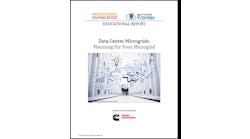Paul Gromer Peregrine Energy Group
Would you pay for something that you can’t see? Probably not. That’s a big problem when it comes to energy efficiency projects. Most of the time, energy efficiency is invisible, and sometimes it doesn’t feel quite real. But energy efficiency is real, and now circuit-level metering can prove it.
Building meter data is great, but…
When an efficiency measure reduces the energy use of a particular piece of equipment, it is often difficult and sometimes impossible to see those savings. Most of the time, the only information available about building energy use comes from the building-level utility meter. That meter gives us one number, which is the total energy use for the entire building. That total use is affected by a number of factors, from weather to new equipment to changes in occupancy and use patterns.
With so many variables making up that total number, it’s impossible to attribute a change in that number to a specific project. And depending on what else is happening in the building, energy savings from one project may be completely invisible because of increased energy use elsewhere.
If you can’t see the savings from the project you just paid for, why spend money on the next one?
Circuit-level metering changes everything
Circuit-level metering refers to the monitoring of individual electrical circuits within a building. Thanks to advances in metering and communication technology, circuit-level metering is now a cost-effective option. That means we can now see the detail behind that meter number for the first time.
This detailed metering is generally accomplished by placing small monitoring devices on the circuits at a building’s electrical panel. These devices collect data about when equipment turns on and off and how much energy it uses when it runs. With that information, we can see and measure exactly how much a single energy efficiency project impacts energy use.
The two graphs below illustrate how incredibly useful and precise circuit-level metering data can be. This example shows the impact of an energy efficiency measure in a municipal library. The measure was a straightforward adjustment to the settings of a specialized climate control system, and it took effect instantly.
In both graphs, the vertical axis is the amount of electricity demand, and the horizontal axis is the time of day. The first graph shows the data from the building-level meter. It shows a small drop in building energy use at the moment the settings were adjusted, but there is simply no way to know whether that drop was caused by the project or by one of the hundreds of other things going on in the building at that time. With only this data, we have no way to verify whether the project really worked.
The second graph shows data from the circuit-level metering. Each major circuit is separately graphed, including the chillers, the lighting, the elevator, and the climate control system, which is in red. Look at the dramatic change in that red line after the settings were adjusted. The impact of the project is as clear as day. And the energy savings are easy to measure.
When it comes to energy efficiency, building managers have been asked to trust that the savings are real. But these projects cost money, which makes trust difficult. With circuit-level metering, energy efficiency is no longer an issue of trust. It’s real, verifiable, measurable, and clearly worth investing in again and again.
Paul Gromer is President of Peregrine Energy Group. Founded in 1992, Peregrine helps public and private organizations make sense of complex energy data and reduce their energy costs and emissions. Peregrine provides utility information management, benchmarking, program and project management, and monitoring and verification of energy savings. Before founding Peregrine, Paul was the Massachusetts Commissioner of Energy Resources and Chairman of the Massachusetts Energy Facilities Siting Council. He is a graduate of Middlebury College and Harvard Law School.







